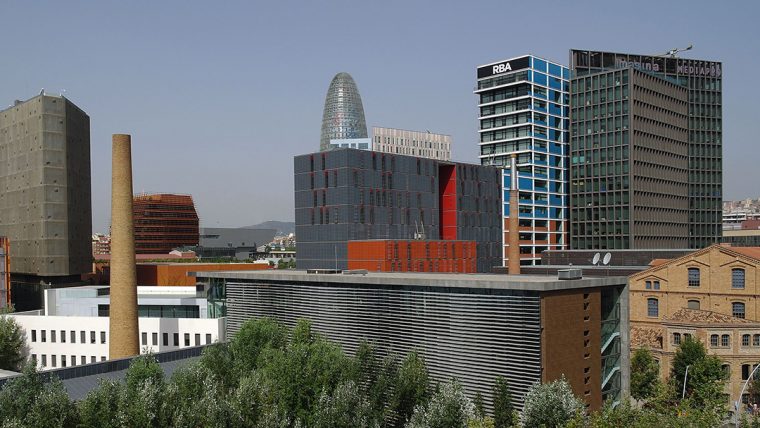
The epicentre of innovation in Barcelona is 22@, where truly modern buildings are located side by side with old factories now used as culture and creation centres.
The technology and knowledge neighbourhood
On a little over 200 hectares of what used to be industrial sites there are now more than 1,500 companies linked to the media, IT, energy, design and scientific research. Poblenou’s industrial land was the setting for Barcelona’s industrialisation and these days it is home to a knowledge cluster. But the future has not fallen out with the past, and lots of new companies are housed in old factories and Modernista-style industrial complexes. So, the old textile mill Ca l’Aranyó is now the Pompeu Fabra University’s Communication Campus, while the fabric warehouse Can Munné today houses the Bau design school.
Change in design
Model restorations like Palo Alto, an old industrial site that currently houses the studios of artists and creators, such as the designer Javier Mariscal, live side by side with the most contemporary architecture. Examples of this are the Torre Agbar, designed by the architect Jean Nouvel, and the Barcelona Growth Centre building, by the architect Enric Ruiz Geli, a cube with four different faces that has received the highest awards for energy efficiency, sustainability and design.
But restored or new-build, the buildings of 22@ have become city icons and turned an industrial neighbourhood into a laboratory for constant innovation. Tradition serves progress and the old factories have been redesigned to achieve greater sustainability. Poblenou is living through a new golden age of industry, the age of knowledge.






Doing business
-
Sant Martí
el Parc i la Llacuna del Poblenou -
Sant Martí
Diagonal Mar i el Front Marítim del Poblenou
- Address:
- C Roc Boronat, 113
- Districte:
- Sant Martí
- Neighborhood:
- el Parc i la Llacuna del Poblenou
- City:
- Barcelona
If you would like to make a correction related to this activity...
LET US KNOW
